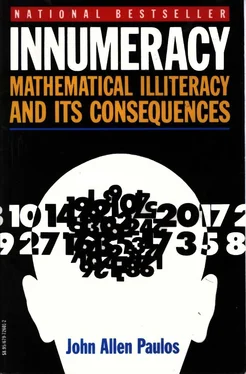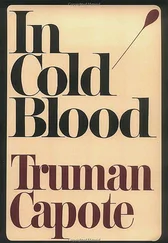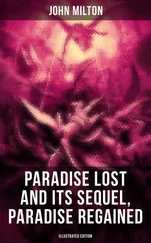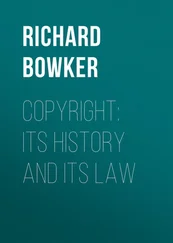One would think that, at this level, computer software would be available to help communicate the basics of arithmetic and its applications (word problems, estimation, etc.). Unfortunately, the programs we have at present are too often transcriptions onto television monitors of unimaginative lists of routine exercises taken from the textbooks. I'm not aware of any software which offers an integrated, coherent, and effective approach to arithmetic and its problem-solving applications.
Some of the blame for the generally poor instruction in elementary schools must ultimately lie with teachers who aren't sufficiently capable, and who too often have little interest in or appreciation of mathematics. In turn, some of the blame for that lies, I think, with schools of education in colleges and universities which place little or no emphasis on mathematics in their teacher-training courses. It's been my experience that students in secondary math education (as opposed to math majors) are generally among the worst students in my classes. The background in math of prospective elementary-school teachers is even worse; in many cases, nonexistent.
A partial solution might be the hiring of one or two mathematics specialists per elementary school who would move from room to room throughout the school day, supplementing (or teaching) the mathematics curriculum. I sometimes think it would be a good idea if math professors and elementary-school teachers switched places for a few weeks each year. No harm would come to the math majors and graduate students at the hands of the elementary-school teachers (in fact, the latter might learn something from the former), while the third-, fourth-, and fifth-graders might greatly benefit from exposure to mathematical puzzles and games competently presented.
A little digression. This connection between puzzles and mathematics persists through to graduate and research-level mathematics, and the same may be said of humor. In my book Mathematics and Humor I tried to show that both activities are forms of intellectual play, which often find common ground in brainteasers, puzzles, games, and paradoxes.
Both mathematics and humor are combinatorial, taking apart and putting together ideas for the fun of it-juxtaposing, generalizing, iterating, reversing (AIXELSYD). What if I relax this condition and strengthen that one? What does this idea-say, the knotting of braids-have in common with that one in some other seemingly disparate area-say, the symmetries of some geometric figure? Of course, this aspect of mathematics isn't very well known even to the numerate, since it's necessary to have some mathematical ideas first before you can play around with them. As well, ingenuity, a feeling for incongruity, and a sense of economical expression are crucial to both mathematics and humor.
Mathematicians, it may be noted, have a characteristic sense of humor which may be a result of their training. They have a tendency to take expressions literally, and this literal interpretation is often incongruous with the standard one and therefore comical. (Which two sports have face-offs? Ice hockey and leper boxing.) They indulge as well in reductio ad absurdum, the logical practice of taking any premise to an extreme, and in various sorts of combinatorial word play.
If mathematics education communicated this playful aspect of the subject, formally at the elementary, secondary, or college level or informally via popular books, I don't think innumeracy would be as widespread as it is.
SECONDARY, COLLEGE, AND GRADUATE EDUCATION
Once students reach high school, the problem of teacher competence becomes more critical. So many of the limited pool of mathematically talented people now work in the computer industry or in investment banking or related fields that I think only substantial salary bonuses for well-qualified secondary-school math teachers will keep the situation in our high schools from getting worse. Since at this level a long list of education courses is not as essential as having a mastery of the relevant mathematics, certifying retired engineers and other science professionals to teach mathematics might be of considerable help. As it is, the basic elements of mathematical culture are in many cases not being communicated to our students. Vieta in 1579 began to use algebraic variables-X, Y, Z, etc.-to symbolize unknown quantities. A simple idea this, yet many high school students today can't follow this four-hundred-year-old method of reasoning: Let X be the unknown quantity, find an equation which X satisfies, and then solve it in order to find the value of the unknown.
Even when the unknowns are appropriately symbolized and the relevant equation can be set up, the manipulations necessary to solve it are too often only hazily understood. I wish I had five dollars for every student who got through his or her high school algebra class only to write, on a test in freshman calculus, that (X + Y) 2= X 2+ Y 2.
Approximately fifty years after Vieta's use of algebraic variables, Descartes devised a way of associating points on a plane with ordered pairs of real numbers and, via this association, a way of identifying algebraic equations with geometric curves. The subject that grew out of this critical insight, analytic geometry, is essential to understanding calculus; yet our students are coming out of high school unable to graph straight lines or parabolas.
Even the 2,500-year-old Greek idea of an axiomatic geometry-a few self-evident axioms being assumed, and from them the theorems being derived by logic alone-is not being effectively taught in secondary school. One of the most commonly used books in high school geometry classes makes use of more than a hundred axioms to prove a similar number of theorems! With so many axioms, all the theorems are surface ones requiring only three or four steps to prove; none has any depth.
In addition to some understanding of algebra, geometry, and analytic geometry, high school students should be exposed to some of the most important ideas of so-called finite mathematics. Combinatorics (which studies various ways of counting the permutations and combinations of objects), graph theory (which studies networks of lines and vertices and the phenomena which can be modeled by such), game theory (the mathematical analysis of games of all sorts), and especially probability, are increasingly important. In fact, the move to teach calculus in some high schools seems to me wrong-headed if it leads to the exclusion of the above topics in finite mathematics. (I'm writing here of an ideal high school curriculum. As the recent "Mathematics Report Card" administered by the Educational Testing Service has indicated, the majority of our high school students can barely solve the elementary problems I mentioned a few pages back.)
High school is the time to reach students. After they get to college, it's often too late for many of them who lack adequate backgrounds in algebra and analytic geometry. Even students who have a reasonable math background are not always aware of the extent to which other subjects are becoming "mathematicized," and they, too, take a minimum of mathematics in college.
Women, in particular, may end up in lower-paying fields because they do everything in their power to avoid a chemistry or an economics course with mathematics or statistics prerequisites. I've seen too many bright women go into sociology and too many dull men go into business, the only difference between them being that the men managed to scrape through a couple of college math courses.
The students who do major in mathematics in college, taking the basic courses in differential equations, advanced calculus, abstract algebra, linear algebra, topology, logic, probability and statistics, real and complex analysis, etc., have a large number of options, not only in mathematics and computer science but in an increasing variety of fields which utilize mathematics. Even when companies recruit for jobs that have nothing to do with mathematics, they often encourage math majors to apply, since they know that analytical skills will serve anyone well, whatever the job.
Читать дальше












